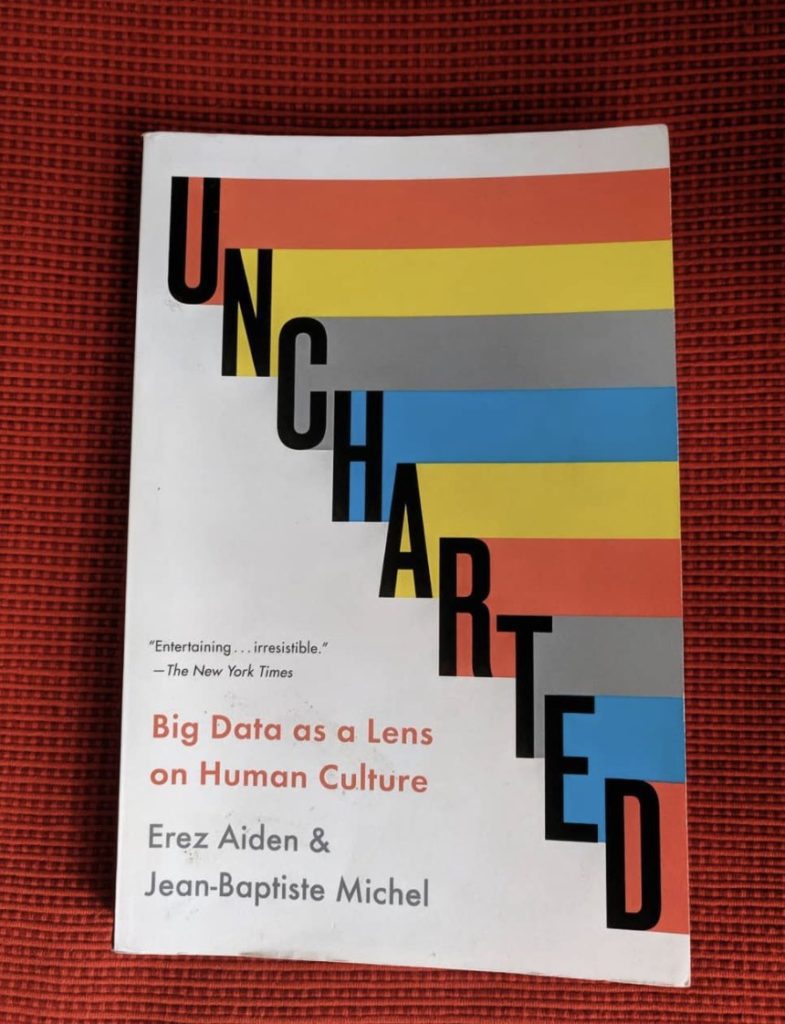Erez Aiden, Jean-Baptiste Michel
The book was published in 2013, relatively the early days of what has come to be a fairly common buzzword. Therefore, it is probably unfair to expect this book to have the understanding or perspectives that the field has accumulated in the last few years.
Having said that, I still think my expectation from the book was higher. It stemmed mostly from the title, and I thought there was tremendous scope there. We now consume, produce and share tons of data on a daily basis. What could it say about us at a societal level? Wouldn’t that be a great way to study how our culture has evolved as a species and perhaps differently in various parts of the world? How do ideas spread, how many of them are universal, and do some have more velocity than others? But hold on. While this book does try to give some answers, it is solely based on the authors’ experiments with datasets using Google Books Ngram Viewer.
This is a formidable tool – 30 million books digitized by Google. But it is limited too. These are only books published, and a subset of them. Books are only a small representation of culture, and by virtue of publishing being gated (in the past) would carry inherent biases. To be fair, the authors are aware of this and bring it up towards the end. It also raises the concerns that have now grown louder – who owns the data, who has access, what is it being used for?
So, if you go by the title, you might be a little disappointed, but it is an interesting story well told and made accessible. It does provide many, many interesting trends and findings across disparate things like technology, popularity, grammar. You would like it especially if you’re interested in language – words, their usage, grammar etc.


Leave a Reply